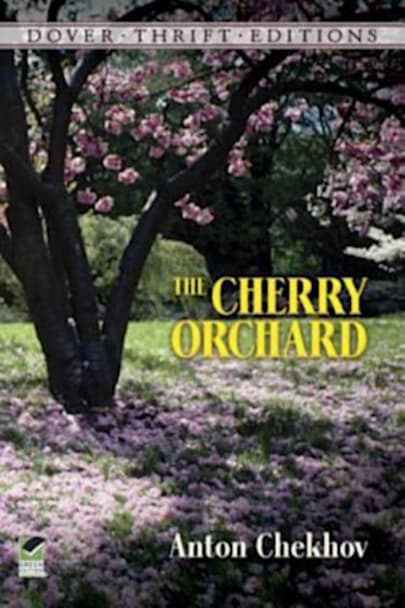Classic of world drama concerns the passing of the old semifeudal order in turn-of-the-century Russia, symbolized in the sale of the cherry orchard owned by Madame Ranevskaya. The work also showcases Chekhov’s rich sensitivities as an observer of human nature. This inexpensive, high-quality edition, reprinted from a standard edition of the play, will provide theater students and any lover of … great drama with a reliable text of this masterpiece.
more



4 out of 5 stars to The Cherry Orchard, a tragedy and comedy all rolled into one, published in 1904 by a great Russian, Anton Chekhov. I’d heard of this play during my high school years, but never actually read it. In college, I had a course in modern drama and theatre, where this was one of the 16 plays we read: 1 per week for the 4 month course. Our school also performed a theatrical version a later semester where I participated in some backstage work. We also did a video and literary analytical comparison. I know the play well. Commentary on society. Discussion of values. Choices. Understanding what you will give up for what you need to have. The themes in this one are so large, it’s often hard to discuss them without getting animated.
Additionally, The Cherry Orchard was the piece that I did my technical and textual analysis on, so I had strong opinions and theories about the characters and the action. When I saw the video, I was a bit shocked at some things, but I also realized that many things were done in the way that I would have done them. The whole discussion/argument about the play being a comedy or a tragedy is one that comes to mind.
I thought while reading the piece that it was mostly a tragedy. The Ranevskys were losing their estate and cherry orchard. I had sympathy and pity for them. Then, I thought more about how it was played in the video, and what the narrator had to say. I also recalled the action in the play and realized that the action is external, and therefore, it depends on the way that characters are played by the actors. It was the acting, at least for me, which showed the tragic side of the play in the video. When Lopakhin is announcing at the end that he is now the owner of the estate and the orchard, the staging and directing was brilliant. The entire stage was silent, and the characters all stood around Lopakhin. The orchestra was playing a little bit also, and Lopakhin began his speech. He was somewhat hysterical, but also vindicated. Watching this scene is what convinced me that the play was more tragic than comic.
The actress who played Madame Ranevsky was a great actress. When she broke down about losing the estate with her brother Gayev, there were more tragic tones to the play. It was hard to decide exactly how I felt about the piece because there were the interruptions to let the narrator talk for awhile. Overall, I liked the version because it appeared very classic. By classic, I mean in the lines and the dark colors. I wish that I saw the actual orchard. I felt a little deprived because the orchard was the focus of the piece.
There were parts that were left out also that I wish I could have seen acted. In my opinion, the entire play should have been put on, and then afterwards, the narrator should have commented on it. They could have held flashbacks and then remind us of specific scenes that were played in a certain way, etc. The end was good when Firs was left alone. I like that part. He was on the couch and I wondered what was going to happen. When I read the play, I thought that he was going to die, but I was unsure about his character in the film. There was a lot of discussion about the sounds of the piercing harp string and the axe at the end when the orchard was being cut down. This discussion was very interesting because it helped me to understand the importance of the sounds before I gave my textual analysis.